Insulation Tips
What Size Insulation Should I Use in My Ceiling?
When working on a ceiling insulation project, it’s important that you choose the right size and amount of insulation to fit your ceiling cavity. If ceiling batts are too thick for the cavity, you may end up compressing them and reducing their efficiency. If you order too much insulation, it could be a costly mistake, but if you order too little it will cause delays in your installation process.
Also Read – Improving Your Home with Ceiling, Floor and Wall Insulation
Choosing What Roof Insulation to Install
To make sure you get it right, follow our tips below for selecting the ideal insulation size and amount for your project.
1. Choose the right R-Value
Whether you’re installing shed roof insulation or ceiling insulation in the family home, the ceiling/roof is responsible for the greatest heat loss and gain. That’s why it is especially important that you choose ceiling insulation with the right R-Value. The higher the R-Value you can afford the more efficient your insulation will be and the greater savings you can experience.
For ceiling insulation, we recommend minimum R-Values of:
- R5.0 or R6.0 for those living in cooler climates such as Melbourne, Sydney or Adelaide.
- R4.0 for those in warmer locations such as Perth, Brisbane or northern NSW.
Keep in mind that insulation batts with a higher R-Value are more dense and so you will get less square metres per bag than you would get with a lower R-Value product. Always check the details of your specific product to make sure you’re getting the right amount.
2. What type of insulation are you using?
Different products will vary in thickness for the same R-Value. For example, rockwool batts have higher R-Values than glasswool batts per unit thickness. Rigid foam board insulation also has high thermal properties for relatively little thickness.
If you decide to use insulation batts, these are cut to a width that fits between the ceiling joists of most Australian homes. However, the dimensions vary slightly between different brands.
Brands such as Knauf and Fletcher offer their ceiling batts in two widths: 430mm and 580mm, but the thickness of the product will depend on the R-Value you choose. For example, Knauf Earthwool R6.0 batts are 275mm thick while R6.0 Fletcher Pink Batts are 250mm thick. Always check the specificities of the product you intend to buy to ensure the right fit for your project.
3. Calculate square metres required
Now that you know which products you will use, it’s time to estimate the amount of insulation you need. Follow the simple calculations below to do so or check out our insulation calculator.
Step 1. Calculate square metres of your ceiling space by multiplying the length by width of the ceiling space.
SQM = L X W
Step 2. Take into account the joists and studs by multiplying the SQM from step 1 by 0.9.
SQM (ceiling) = L X W X 0.9
Step 3. Once you know the amount of SQM you need, divide your SQM value by the amount of SQM per bag of insulation.
Bags needed = SQM (ceiling) / SQM per bag
4. DIY? Do your research
Are you planning a DIY installation? Be sure to read up on the necessary safety precautions and best practices such as whether to install insulation or wiring first, how to use off-cuts to reduce waste and ensuring that batts are not compressed during installation.

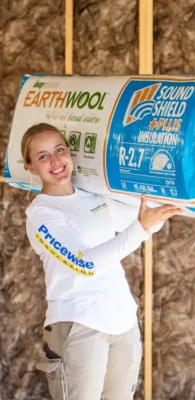
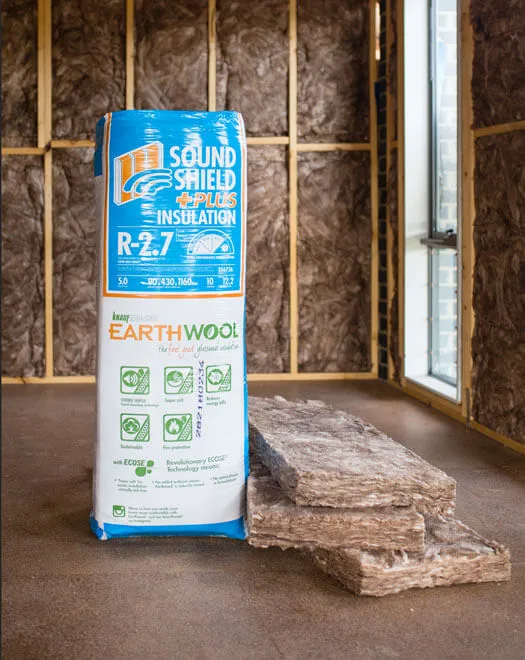
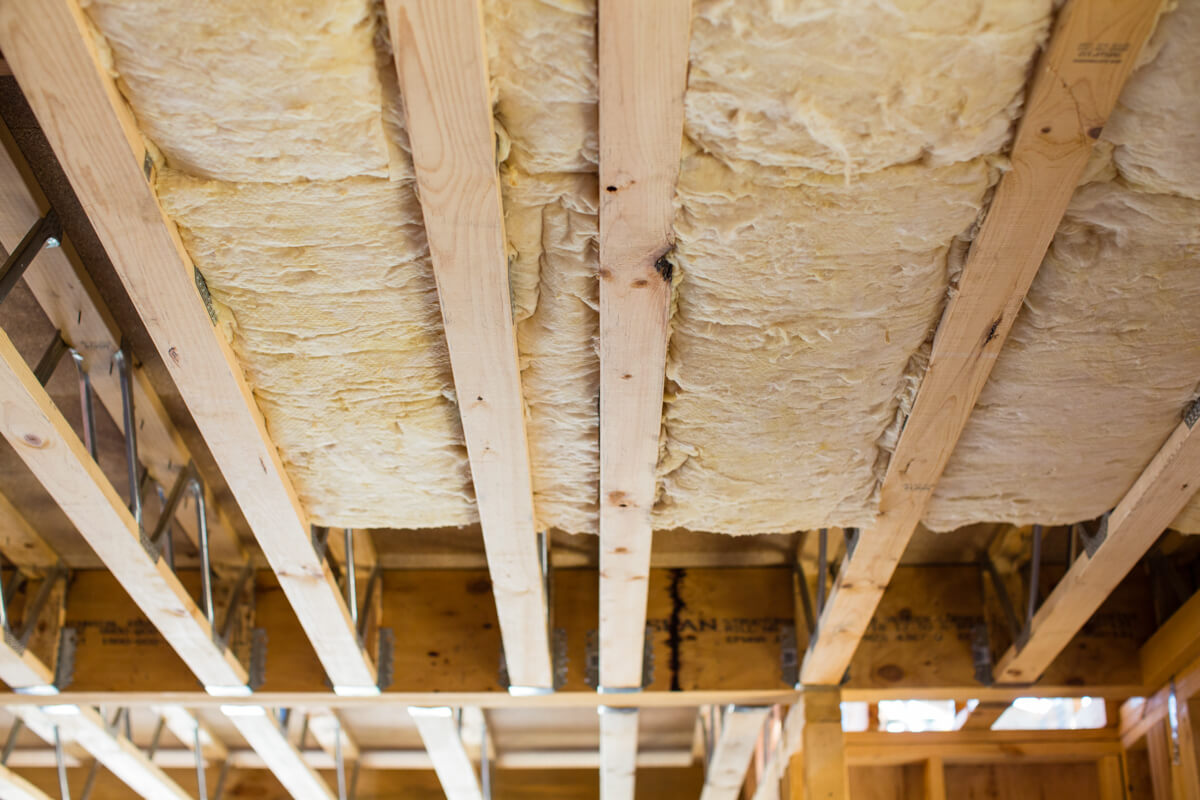
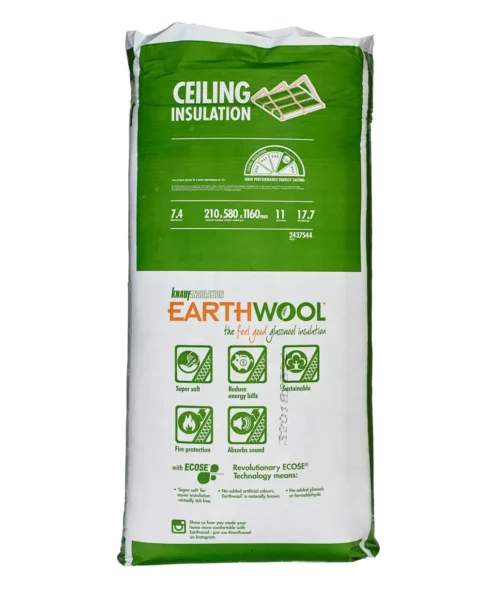
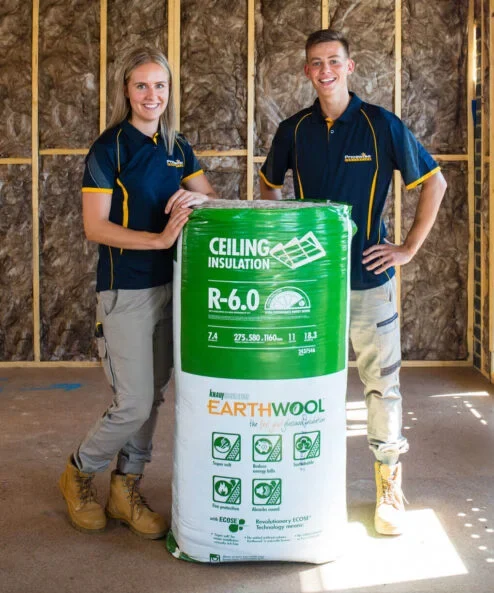
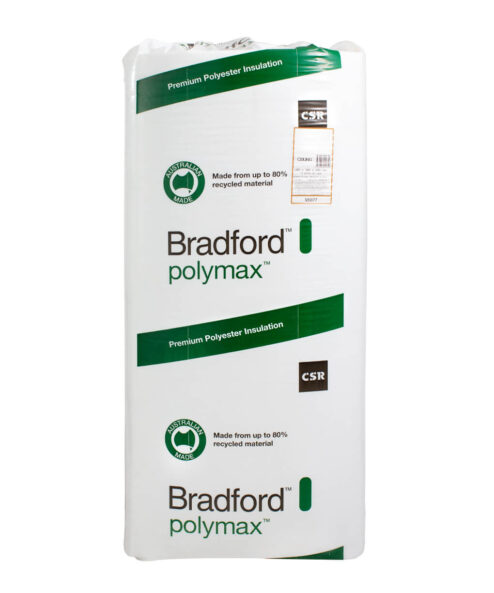
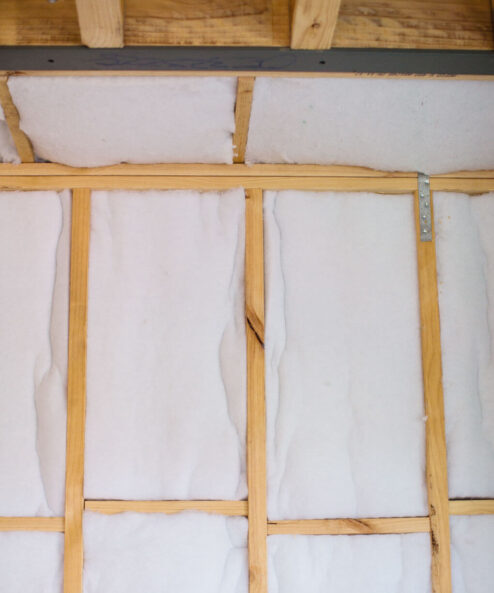
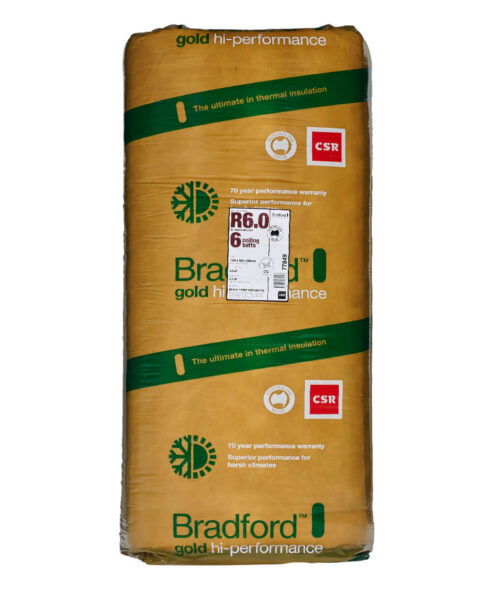

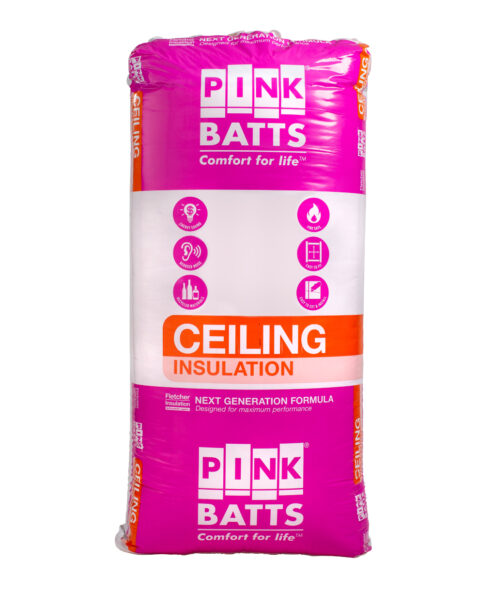
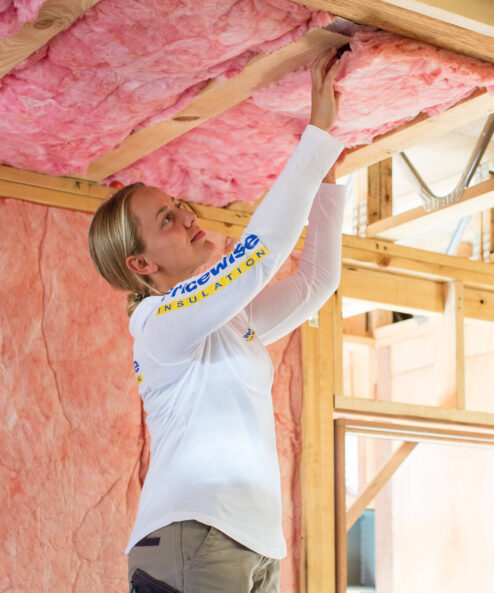
Hello i am retrofitting insulation into my ceiling. I need a bat that is about 11cm think. What is the highest R rating i can achieve ?
thank you for your time,
all the best,
Caroline
Hi Caroline,
Thanks for your question. R3.1 Bradford Soundscreen Insulation and R3.1 Pink Soundbreak Insulation are both 110mm thick (11cm). If you have enough space then you could also consider R4.0HD Knauf Earthwool Sound Shield Insulation which is 140mm thick (14cm). Just make sure that you leave enough space for an air gap to allow the insulation to work effectively.
Feel free to give our team a call on 1300 729 639 if you have any further questions.
Cheers,
Christa
My ceiling rafters width is 73cn. Is there a batt in that width in R2.5
Hi Ralph,
Thanks for reaching out! While we don’t have pre-cut batts specifically tailored to a 73cm spacing, you’ve got a nifty workaround with the R2.5HD or R2.7HD Earthwool Insulation in a 580mm wide batt. You can easily cut some batts into thirds and snugly place them up against each other. They should stay in place until you get your ceiling lined with plasterboard or timber.
If the batts need a bit more encouragement to stay put, you can get a few rolls of insulation strapping and install two straps per batt to keep them where you want them.
Feel free to reach out if you have more questions or if there’s anything else I can assist you with!
Regards,
Felicity
Hello,
The distance between joists in my ceiling are 460mm, what width should I be buying?
Thanks
Hi Will,
Thanks for getting in touch! It’s a bit of a challenge with homes from the 70s and 80s — many were framed with that 500mm center spacing, leaving a 460mm gap. While there aren’t batts designed to fit this spacing precisely, the good news is that glasswool is super easy to cut with a Stanley knife. If your manhole is spacious enough to accommodate a pack of 580mm wide insulation, that’s our top recommendation. However, if those packs are a bit snug, the 430mm wide insulation will do the job just fine.
Feel free to reach out if you have any further questions. 1300 729 639
Regards,
Felicity
Good morning.
What is the highest rating we can use for these measurements and how much thickness above the compartment would be appropriate in ceiling insulation. Thank you Mark.
Between the joists is 560 wide x 90 mm deep.
Hi Mark,
Thanks for your comment!
In terms of the highest rating, it’s crucial to consider the R-value, which indicates the insulation’s thermal resistance. The optimal R-value varies based on factors like your location, climate, and specific requirements. If you are building a new home, then you will need to achieve the minimum R-value outlined in your energy report. If you are living in an existing home, then we recommend installing a minimum of R4.0 ceiling insulation anywhere in Australia. If you live in Melbourne, Sydney or Adelaide then we would recommend upgrading to a higher R-value such as R5.0 or R6.0 insulation. You can check out the videos on our blog post ‘Best Ceiling Insulation for Australia Homes’ for more information.
Regarding the thickness of insulation above the ceiling joists, this is not a problem providing that you allow a sufficient air gap between the top of the insulation and the roofing material above (typically around 20mm if you have a flat roof). You can take a look at our blog post: How to Install Roof Insulation With Pricewise Insulation. This will give you some more insight into the right approach for a DIY install.
Feel free to give our team a call on 1300 729 639 or email sales@pricewise.com.au if you have any further questions.
Warm regards
Felicity
Hi I am after intermediate floor sound acoustic insulation, looking for R4 HD 140mm Earthwool insulation. My question is my Floor joist depth is 300mm so after installing 140mm insulation we have air gap of 160mm, is that reduce the performance of sound insulation between floors?
Second option I can use 275mm Thermal insulation R6.0 Earthwool .
between 140mm R4 Sound acoustic insulation and R6 275mm thermal insulation which one is better option for me. My primarily goal is to reduce noise between floors in double story house.
Hi Rakesh,
Thanks for your question!
An air gap in your floor space won’t negatively affect the acoustic performance of the overall system – in fact, it might slightly improve it. Plus, it provides room to run services like plumbing, exhaust, and heating/cooling ducts.
Regarding the performance difference between the R4.0HD and R6.0, the R4.0HD is a bit heavier, so it will perform slightly better. However, both options will significantly improve the acoustic performance of your floor.
The gap between my Joists is 520 mm (90 mm deep). Can I squeeze the 580 mm batts into that width?
Hi Bruce,
Thanks for your comment!
Yes, you can squeeze 580mm insulation batts into a 520mm gap between joists. Insulation batts are designed to be slightly wider than the joist spacing to ensure a snug fit. The extra width allows the batts to stay in place through friction, improving thermal performance by minimising gaps and air leakage.
However, for optimal installation, compress the batt slightly to fit it snugly into the gap, ensuring it fills the space without being overly compressed, which could reduce its insulating properties.
If the batt needs to be significantly compressed to fit the space, you can trim it using a utility knife and a straight edge. Cut the batt approximately 2-3 cm wider than the gap between the joists to ensure a snug fit.
Also note: If you’re installing a high-density batt like the Earthwool R2.5HD or R4.0HD, trim it to only 5mm wider than the space between the joists or studs.
Hope that helps! Feel free to reach out if you have any further questions.